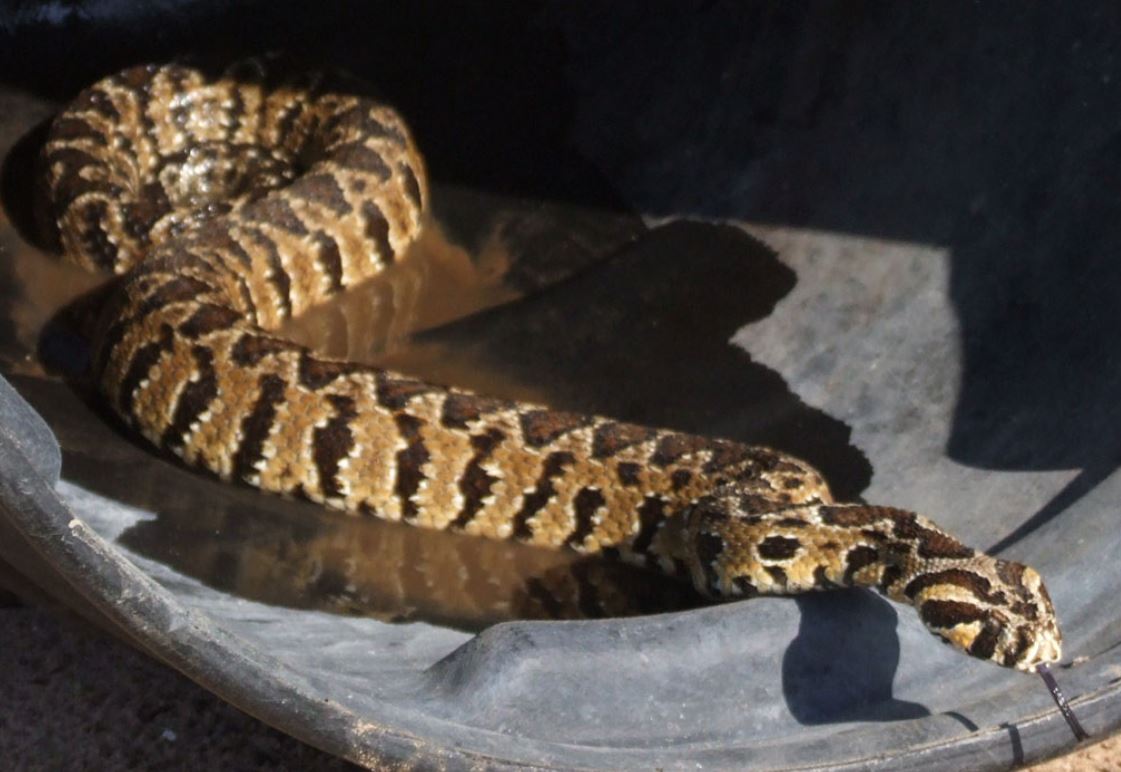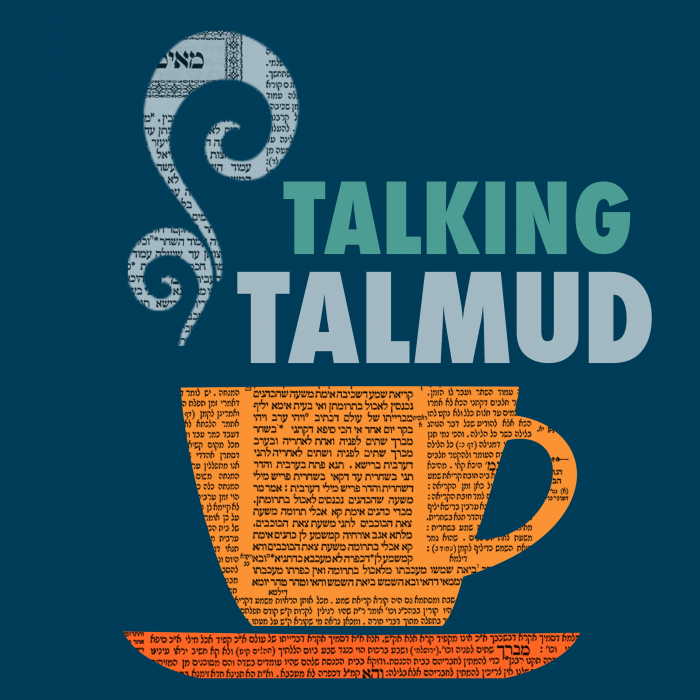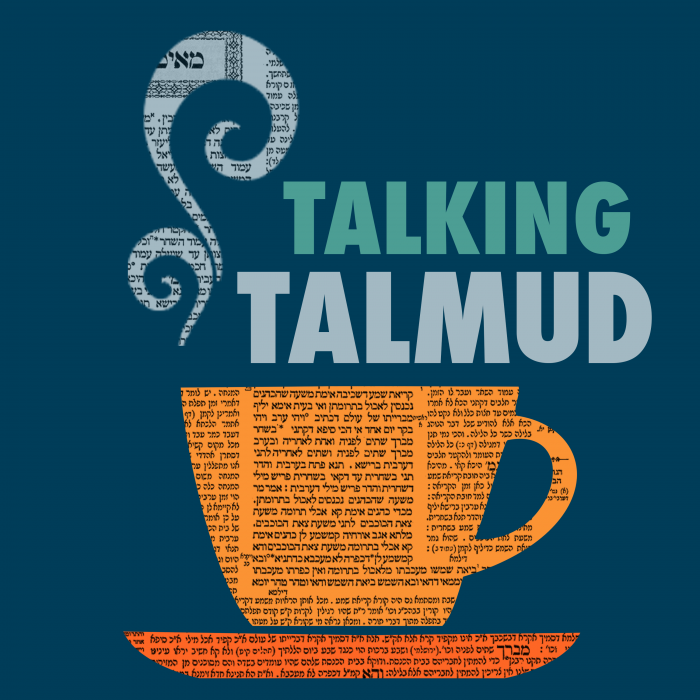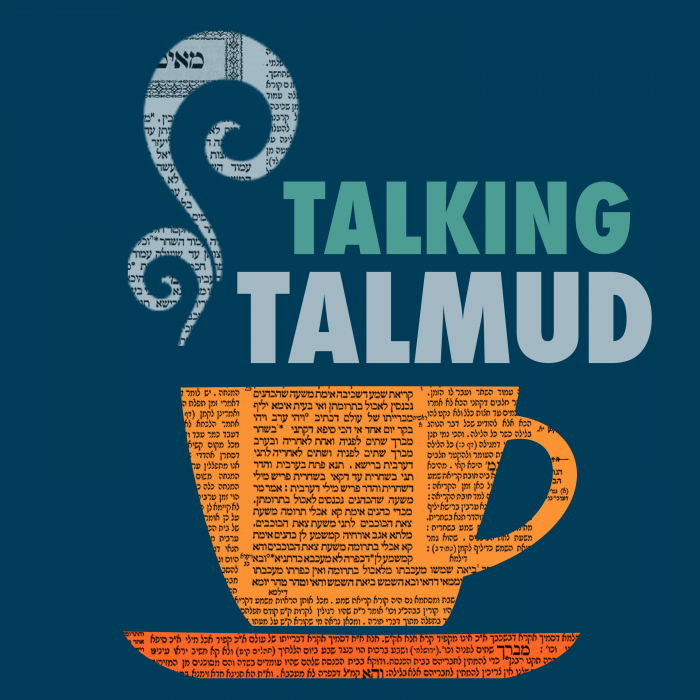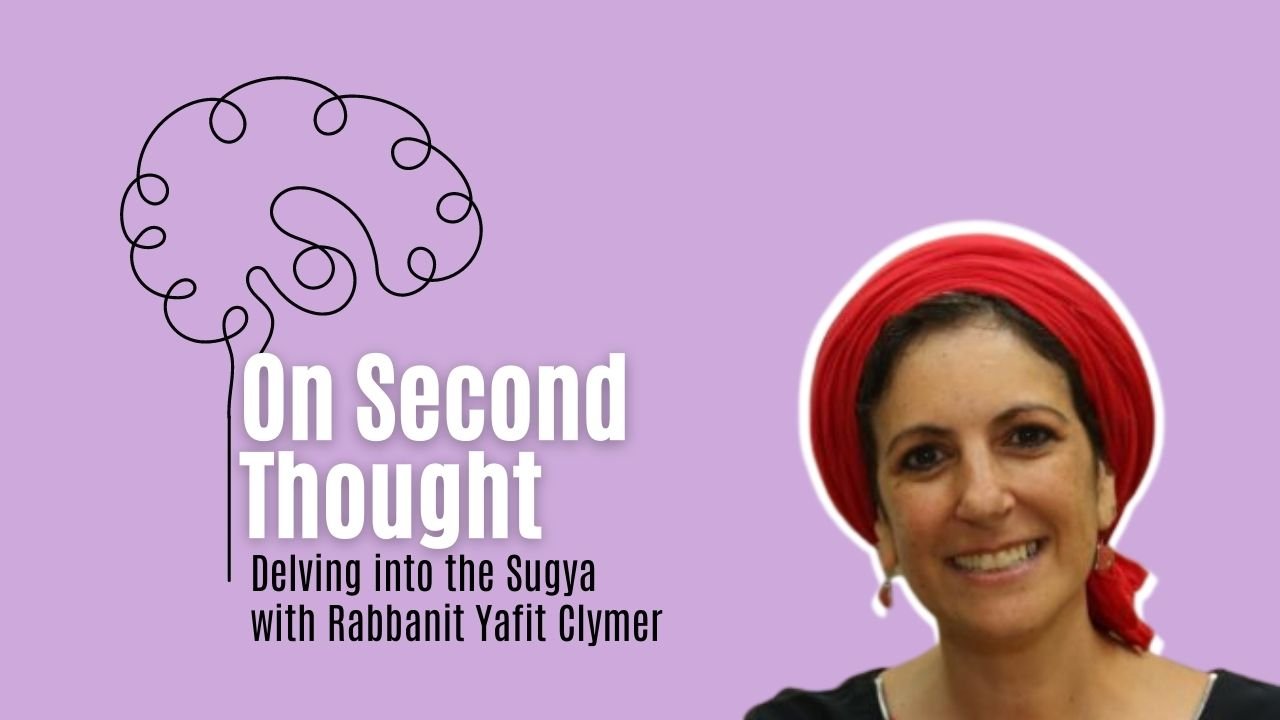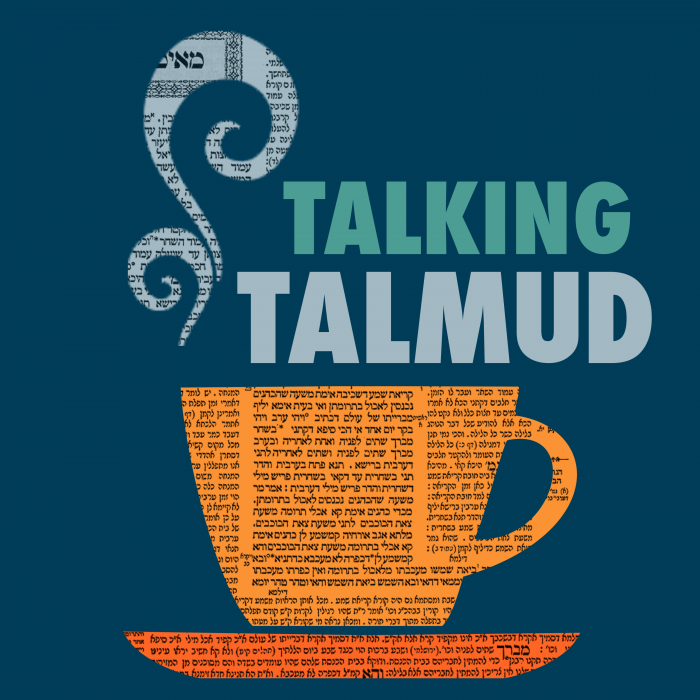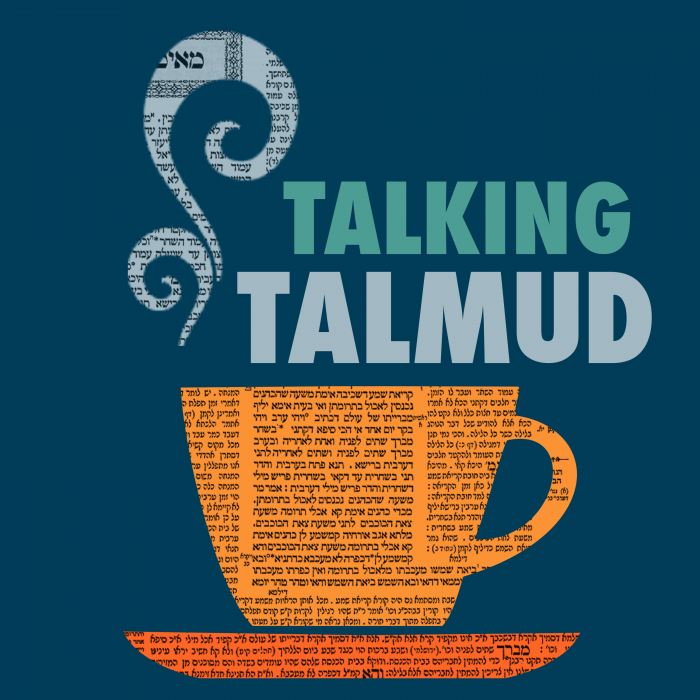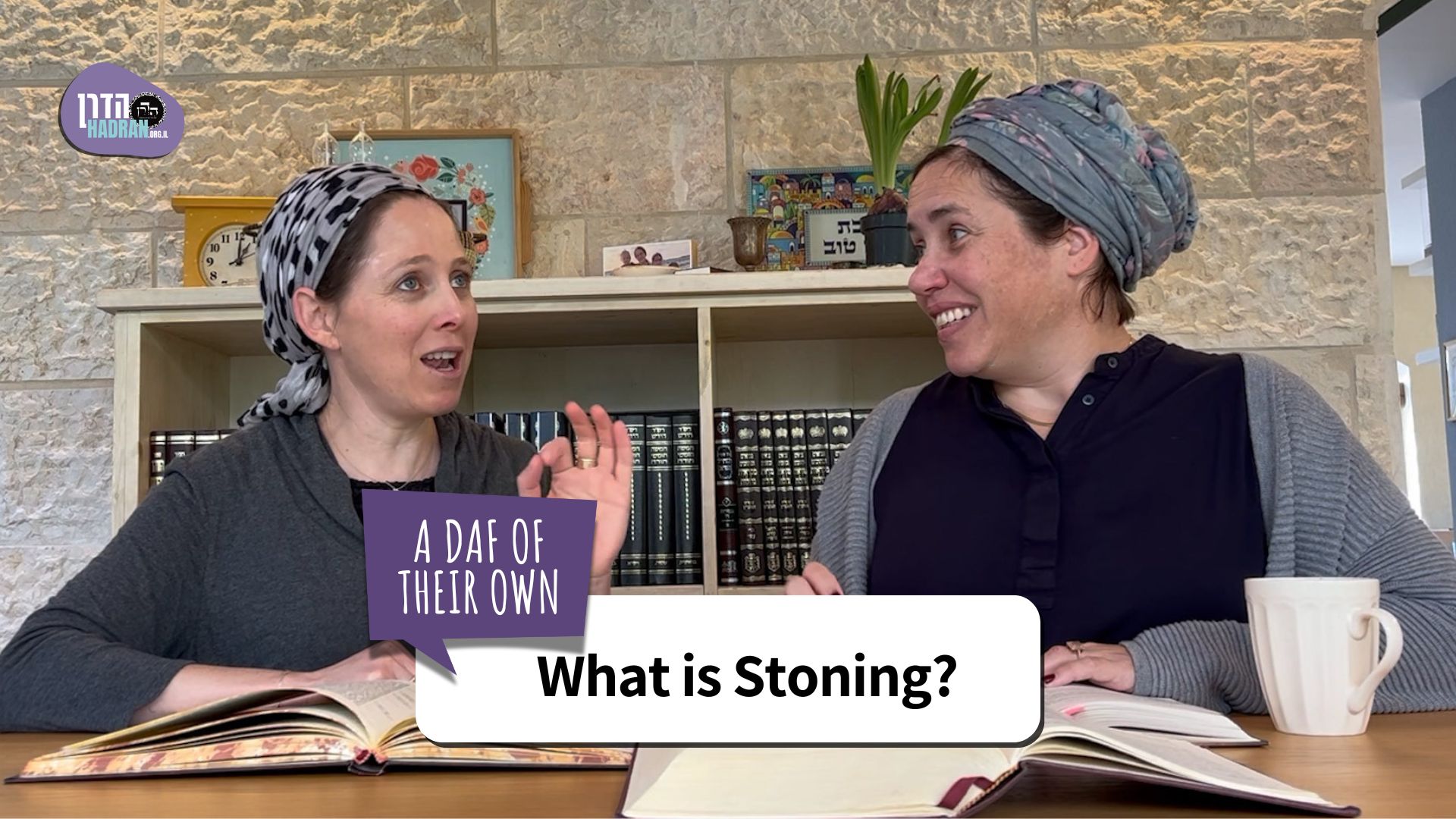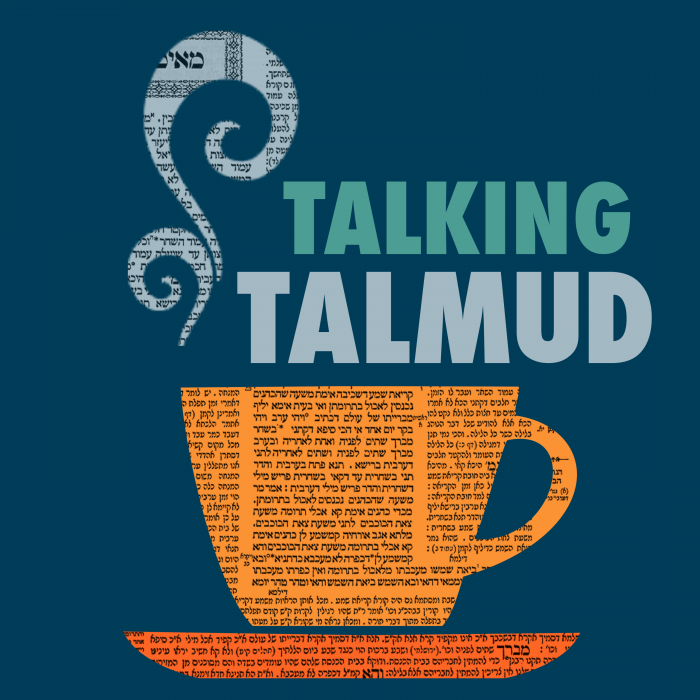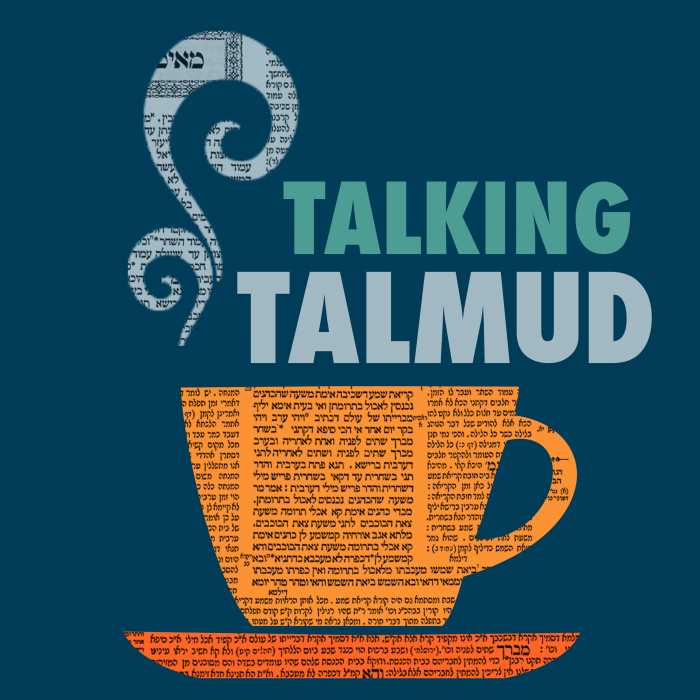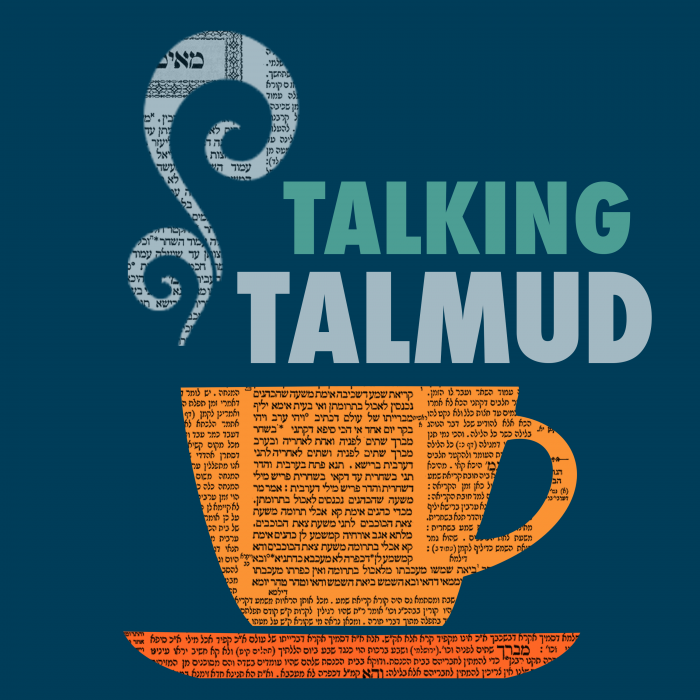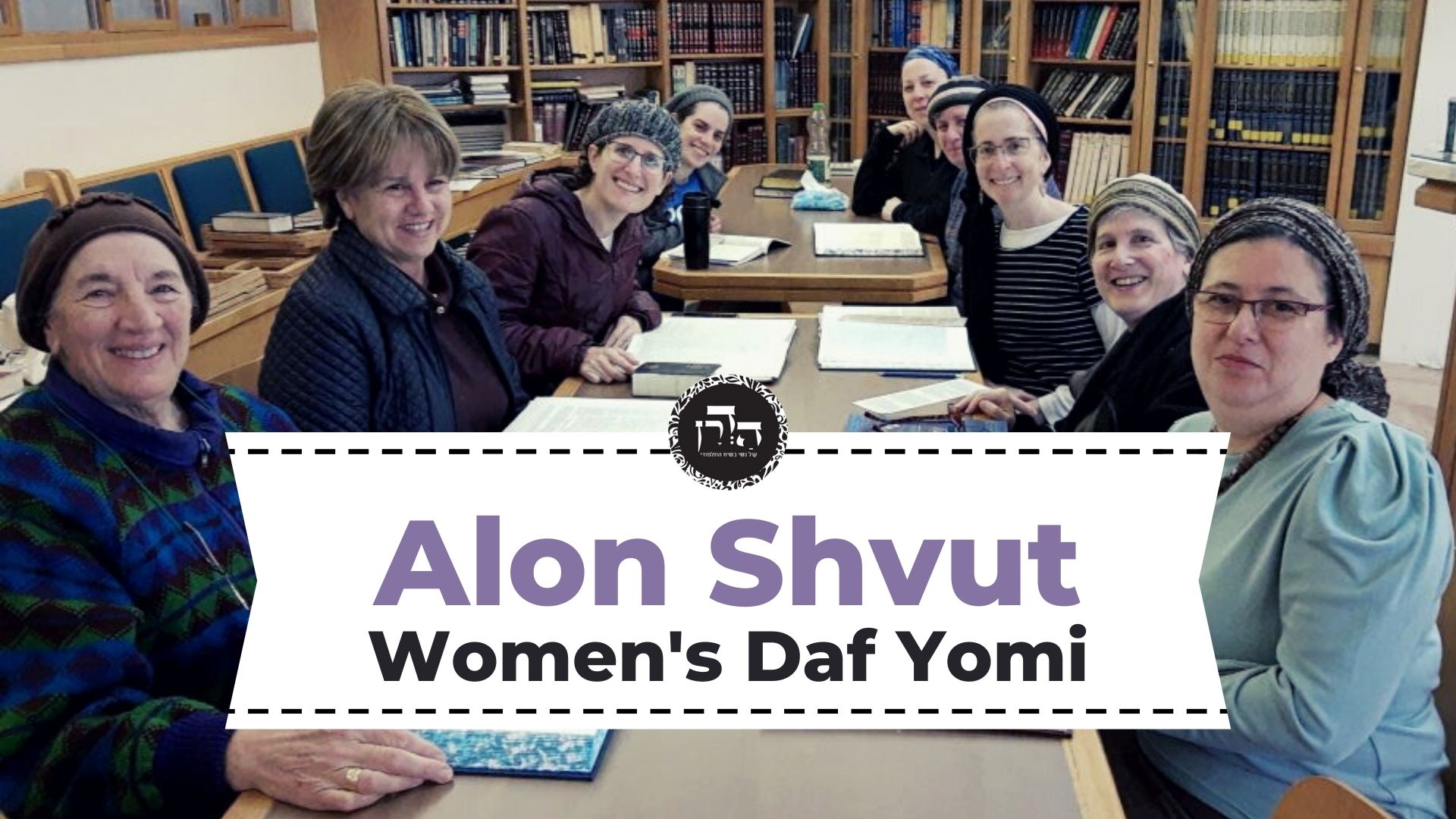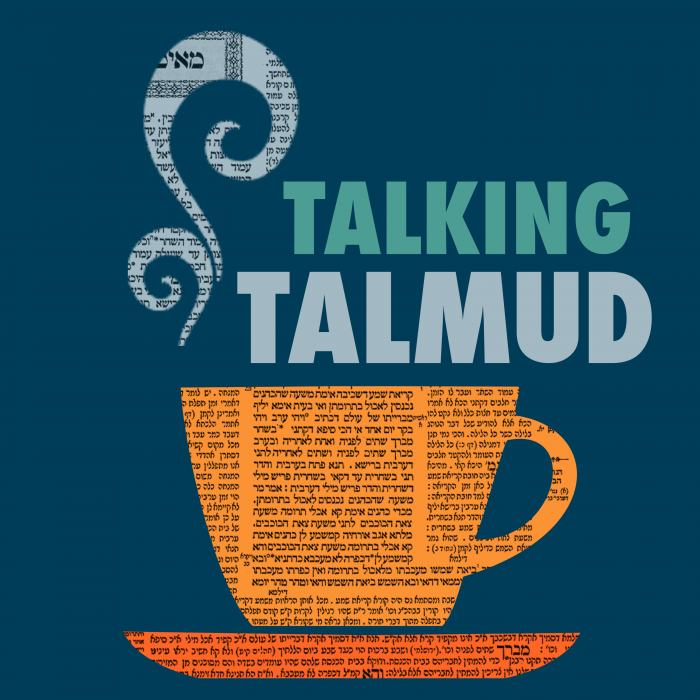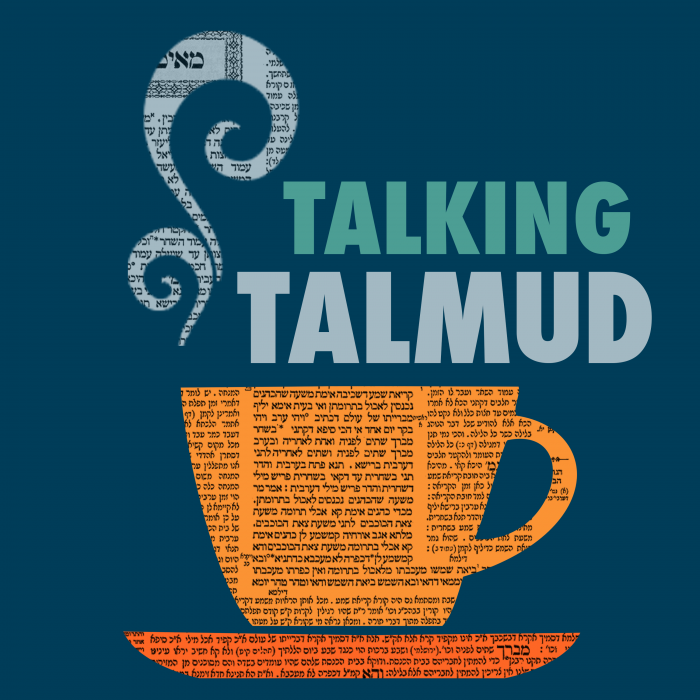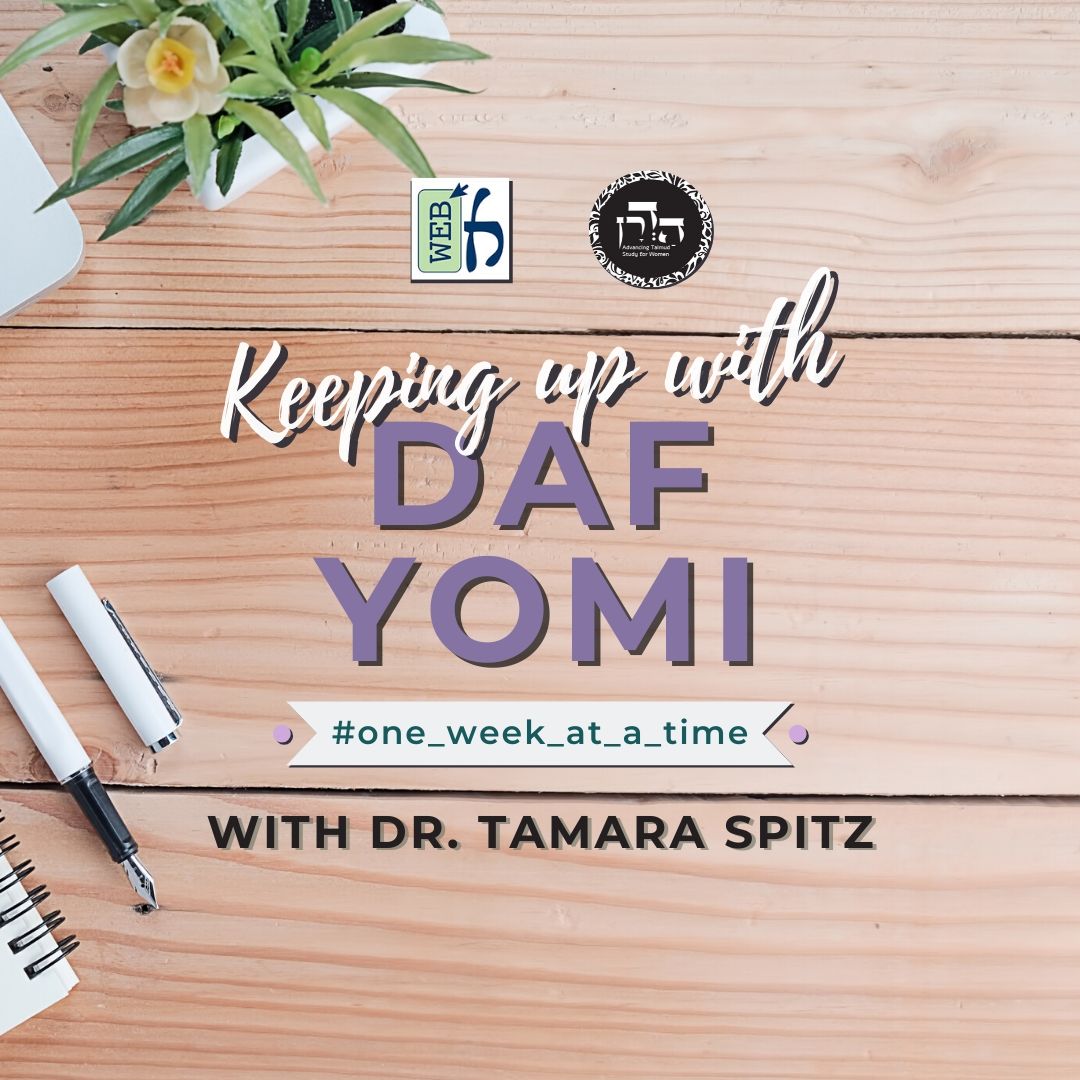Would Rabbi Shimon permit a non kosher animal born to a kosher animal if it is a little bit similar to its mother or does its head and most of its body need to be like its mother (as in the laws of firstborn)? What is the law regarding items that pass through or come out of non kosher animals – are they all forbidden or does it depend on other factors? Why is honey permitted to be eaten? If one finds a kosher fish inside a non kosher fish or the reverse, can one eat it?
This week’s learning is sponsored by Robert and Paula Cohen in loving memory of Joseph Cohen, Yosef ben Moshe HaCohen, z”l. “He was hard working, loved to sing, esp. as a chazan, and was very dedicated to his family and community.”
Want to dedicate learning? Get started here:


Today’s daily daf tools:
This week’s learning is sponsored by Robert and Paula Cohen in loving memory of Joseph Cohen, Yosef ben Moshe HaCohen, z”l. “He was hard working, loved to sing, esp. as a chazan, and was very dedicated to his family and community.”
Today’s daily daf tools:
Delve Deeper
Broaden your understanding of the topics on this daf with classes and podcasts from top women Talmud scholars.
New to Talmud?
Check out our resources designed to help you navigate a page of Talmud – and study at the pace, level and style that fits you.
The Hadran Women’s Tapestry
Meet the diverse women learning Gemara at Hadran and hear their stories.
Bekhorot 7
אִישְׁתַּנִּי מִגָּמָל שַׁפִּיר דָּמֵי, אוֹ דִלְמָא לָא שְׁנָא?
it is different from an ordinary camel and has some characteristics of its mother, perhaps it is permitted to eat it. Or perhaps there is no difference, and with regard to consumption Rabbi Shimon also requires that its head and the majority of its body resemble its mother.
תָּא שְׁמַע: בְּהֵמָה טְהוֹרָה שֶׁיָּלְדָה מִין בְּהֵמָה טְמֵאָה — אָסוּר בַּאֲכִילָה, וְאִם דּוֹמֶה רֹאשׁוֹ וְרוּבּוֹ לְאִמּוֹ — חַיָּיב בִּבְכוֹרָה. שְׁמַע מִינַּהּ: לַאֲכִילָה נָמֵי בָּעֵי רַבִּי שִׁמְעוֹן רֹאשׁוֹ וְרוּבּוֹ!
The Gemara suggests: Come and hear a proof from a baraita: With regard to a kosher animal that gave birth to a non-kosher animal of sorts, the offspring is forbidden for consumption, in accordance with the opinion of Rabbi Shimon; but if its head and the majority of its body are similar to its mother, it is obligated in, i.e., subject to the obligations of, firstborn status. Learn from it that with regard to consumption, Rabbi Shimon also requires that its head and the majority of its body resemble the mother.
לָא, לִבְכוֹרָה דַּוְקָא. דַּיְקָא נָמֵי, דְּקָא שָׁבְקַהּ לַאֲכִילָה וְקָם לֵיהּ אַבְּכוֹר. שְׁמַע מִינַּהּ: לִבְכוֹרָה הוּא דְּבָעֵי רַבִּי שִׁמְעוֹן רֹאשׁוֹ וְרוּבּוֹ, אֲבָל לַאֲכִילָה — לָא.
The Gemara rejects the proof: No, the requirement that its head and the majority of its body resemble the mother is relevant specifically with regard to firstborn status. The Gemara comments: The language of the baraita is also precise, as the tanna leaves the halakha of consumption with which he began and addresses the halakha of firstborn status. Learn from it that it is with regard to firstborn status that Rabbi Shimon requires that its head and the majority of its body resemble the mother, but with regard to consumption he does not require this, and even a partial similarity suffices.
לְעוֹלָם אֵימָא לָךְ: לַאֲכִילָה נָמֵי בָּעֵי, וּבְכוֹרָה אִיצְטְרִיךְ, סָלְקָא דַּעְתָּךְ אָמֵינָא: הוֹאִיל וּכְתִיב ״אַךְ בְּכוֹר שׁוֹר״, עַד שֶׁיְּהֵא הוּא שׁוֹר וּבְכוֹרוֹ שׁוֹר, וְלֹא תִּיסְגֵּי לֵיהּ בְּרֹאשׁוֹ וְרוּבּוֹ עַד דְּאִיכָּא כּוּלֵּיהּ, קָמַשְׁמַע לַן.
The Gemara rejects this conclusion as well: Actually, I will say to you that with regard to the permissibility of consumption he also requires that its head and the majority of its body be similar to the mother. But it was necessary to state this condition specifically with regard to the halakha of firstborn status, as it might enter your mind to say that since it is written: “But the firstborn of an ox” (Numbers 18:17), perhaps firstborn status does not apply unless it is an ox and its firstborn is an ox, and a resemblance of the offspring’s head and the majority of its body to the mother does not suffice unless its whole body has the appearance of an ox. Therefore, the tanna teaches us that a resemblance of its head and the majority of its body to the mother do suffice.
תָּא שְׁמַע: ״אַךְ אֶת זֶה לֹא תֹאכְלוּ מִמַּעֲלֵי הַגֵּרָה וּמִמַּפְרִיסֵי הַפַּרְסָה״, זֶה — אִי אַתָּה אוֹכֵל, אֲבָל אַתָּה אוֹכֵל הַבָּא בְּסִימָן אֶחָד.
The Gemara suggests: Come and hear a proof from a baraita: The Torah states: “Nevertheless these shall you not eat from them that only chew the cud, or from them that only have a split hoof: The camel” (Leviticus 11:4). The phrase: “From them that only chew the cud,” which is referring to animals that are forbidden for consumption, indicates that a camel or other non-kosher animal that is born to a kosher animal is forbidden. Furthermore, the word “these” teaches that concerning these animals that resemble a non-kosher animal, you may not eat them when they are born to a kosher animal, but you may eat a non-kosher animal that comes with one characteristic of its mother.
וְאִי זֶה זֶה הַבָּא בְּסִימָן אֶחָד? זֶה טָמֵא הַנּוֹלָד מִן הַטָּהוֹר, וְעִבּוּרוֹ מִן הַטָּהוֹר.
And which animal is this that comes with one characteristic of its mother? This is a non-kosher animal that is born from a kosher female animal and its impregnation came from a kosher male animal.
יָכוֹל אֲפִילּוּ עִבּוּרוֹ מִן הַטָּמֵא? תַּלְמוּד לוֹמַר: ״שֵׂה כְשָׂבִים וְשֵׂה עִזִּים״, עַד שֶׁיְּהֵא אָבִיו כֶּבֶשׂ וְאִמּוֹ כִּבְשָׂה, דִּבְרֵי רַבִּי יְהוֹשֻׁעַ.
The baraita continues: One might have thought that even if its conception came from a non-kosher male animal it should be permitted. Therefore, the verse states: “These are the beasts which you may eat: “The ox, the sheep [seh kesavim], and goat [veseh izzim]” (Deuteronomy 14:4). The plural form of “kesavim” and “izzim” indicates that a lamb is not kosher unless its father is a male lamb and its mother is a female lamb. This is the statement of Rabbi Yehoshua.
רַבִּי אֱלִיעֶזֶר אוֹמֵר: לֹא בָּא הַכָּתוּב לְהַתִּיר אֶת הַמּוּתָּר, אֶלָּא לְהוֹסִיף עַל הַמּוּתָּר, וְאֵיזֶה זֶה? טָמֵא הַנּוֹלָד מִן הַטָּהוֹר וְעִבּוּרוֹ מִן הַטָּמֵא. אוֹ אֵינוֹ אֶלָּא עִבּוּרוֹ מִן הַטָּהוֹר? תַּלְמוּד לוֹמַר: ״שׁוֹר שֵׂה כְשָׂבִים וְשֵׂה עִזִּים״ מִכׇּל מָקוֹם.
Rabbi Eliezer says: Offspring whose father and mother are both kosher are permitted, and this verse which renders permitted an offspring that partially resembles its mother does not come to permit that which is permitted, i.e., where both parents are kosher, but it comes rather to add to that which is permitted; and which case is this? It is a case of a non-kosher animal that is born from a kosher animal and its conception came from a non-kosher animal. Or perhaps it permits only an animal whose conception came from a kosher animal? The verse states: “The ox, the sheep [seh kesavim], and goat [veseh izzim].” The repetition of the word seh indicates that it is permitted to be eaten in any case, even if only its mother was a ewe.
קָרֵי לֵיהּ ״טָמֵא״, כְּרַבִּי שִׁמְעוֹן, וְקָאָמַר: אֲבָל אַתָּה אוֹכֵל הַבָּא בְּסִימָן אֶחָד!
In any event, the tanna of this baraita refers to a non-kosher animal that was born to a kosher animal as non-kosher, in accordance with the opinion of Rabbi Shimon, who deems a camel that was born to a cow forbidden to eat, and he says: But you may eat a non-kosher animal that comes with one characteristic that is similar to its mother. Apparently, Rabbi Shimon does not require that the head and the majority of the body resemble the mother for it to be rendered fit for consumption.
הַאי תַּנָּא סָבַר לֵיהּ כְּוָותֵיהּ בַּחֲדָא, וּפְלִיג עֲלֵיהּ בַּחֲדָא.
The Gemara responds: No proof may be brought from here, as this tanna holds in accordance with the opinion of Rabbi Shimon with regard to one matter, where a kosher animal gave birth to a non-kosher animal, maintaining that it is forbidden, and disagrees with his opinion with regard to one other matter, where the animal has some characteristics of the mother, in which case this tanna deems it permitted to be eaten. Concerning the second matter, Rabbi Shimon deems it forbidden unless the head and majority of the body resemble the mother.
וְאִיכָּא דְּמַקְשֵׁי וּמוֹתֵיב: עִבּוּרוֹ מִן הַטָּמֵא — מִי מִעַבְּרָא?
The Gemara comments that there are those who raise a difficulty with this baraita and resolve it, thereby resolving the dilemma concerning the opinion of Rabbi Shimon: The baraita states that the kosher animal’s impregnation came from a non-kosher animal. Can a kosher animal become pregnant from a non-kosher animal?
וְהָאָמַר רַבִּי יְהוֹשֻׁעַ בֶּן לֵוִי: לְעוֹלָם אֵין מִתְעַבֶּרֶת לֹא טְמֵאָה מִן הַטָּהוֹר, וְלֹא טְהוֹרָה מִן הַטָּמֵא, וְלֹא גַּסָּה מִן הַדַּקָּה, וְלֹא דַּקָּה מִן הַגַּסָּה, וְלֹא בְּהֵמָה מִן חַיָּה, וְלֹא חַיָּה מִן בְּהֵמָה.
But doesn’t Rabbi Yehoshua ben Levi say: A non-kosher animal never becomes pregnant from a kosher one, e.g., a camel from an ox, nor a kosher animal from a non-kosher one, e.g., a cow from a horse, nor a large animal from a small animal, e.g., a cow from a goat, nor a small one from a large one, e.g., a ewe from an ox, nor a domesticated animal from an undomesticated animal, e.g., a goat from a deer, nor an undomesticated animal from a domesticated animal, e.g., a gazelle from a goat.
חוּץ מֵרַבִּי אֱלִיעֶזֶר וּמַחְלוּקְתּוֹ, שֶׁהָיוּ אוֹמְרִים חַיָּה מִתְעַבֶּרֶת מִבְּהֵמָה!
With regard to all these cases, everyone agrees that pregnancy is impossible except for Rabbi Eliezer and his disputants, who would say that an undomesticated animal can become pregnant from a domesticated animal (see Ḥullin 79b). Those Sages disagree with regard to whether slaughtering the offspring of a gazelle that became pregnant from a goat is included in the prohibition against slaughtering a mother and its offspring on the same day.
וְאָמַר רַבִּי יִרְמְיָה: דְּאִיעַבַּר מִקָּלוּט בֶּן פָּרָה, וְאַלִּיבָּא דְּרַבִּי שִׁמְעוֹן קָאָמַר, וְקָאָמַר: אֲבָל אַתָּה אוֹכֵל הַבָּא בְּסִימָן אֶחָד!
And Rabbi Yirmeya says in response to the difficulty: When the baraita discusses the case of a kosher animal that became pregnant from a non-kosher animal, the reference is to a case where the kosher animal became pregnant from an animal with closed hooves that is the offspring of a cow. A cow can become pregnant from such an animal because the mother of that animal was a cow. And the tanna of the baraita said his opinion in accordance with the opinion of Rabbi Shimon, that a non-kosher animal that was born from a kosher animal is considered non-kosher, and he says: But you may eat that which comes with one characteristic of its mother. Apparently, Rabbi Shimon does deem permitted the consumption of an animal with some characteristics similar to its mother.
הַאי תַּנָּא סָבַר לַהּ כְּוָותֵיהּ בַּחֲדָא, וּפְלִיג עֲלֵיהּ בַּחֲדָא.
The Gemara responds: This tanna holds in accordance with the opinion of Rabbi Shimon with regard to one matter, where a kosher animal gave birth to a non-kosher animal, maintaining that it is forbidden, and disagrees with his opinion with regard to one other matter, where the animal has some characteristics of the mother, in which case this tanna deems it fit for consumption. Concerning the second matter, Rabbi Shimon deems it forbidden unless the head and majority of the body resemble the mother.
לְמֵימְרָא, דְּרַבִּי אֱלִיעֶזֶר סָבַר: זֶה וָזֶה גּוֹרֵם — מוּתָּר, וְרַבִּי יְהוֹשֻׁעַ סָבַר: זֶה וָזֶה גּוֹרֵם — אָסוּר?
§ The Gemara asks concerning the dispute between Rabbi Eliezer and Rabbi Yehoshua in the baraita: Is this to say that Rabbi Eliezer holds that when both this and that cause it, i.e., both permitted and forbidden items contribute to a result, the result is permitted, and he therefore permits the consumption of the offspring of a kosher animal that became pregnant from a non-kosher animal; and Rabbi Yehoshua holds that when both this and that cause it, it is forbidden?
וְהָא אִיפְּכָא שָׁמְעִינַן לְהוּ: וְלַד טְרֵיפָה, רַבִּי אֱלִיעֶזֶר אוֹמֵר: לֹא יִקְרַב לְגַבֵּי מִזְבֵּחַ, וְרַבִּי יְהוֹשֻׁעַ אוֹמֵר: יִקְרַב לְגַבֵּי מִזְבֵּחַ!
But we have heard them saying the opposite: With regard to the offspring of an animal with a wound that will cause it to die within twelve months [tereifa] and is forbidden to be eaten or sacrificed as an offering upon the altar, Rabbi Eliezer says: The offspring may not be sacrificed upon the altar either, despite the fact that its father is kosher, and Rabbi Yehoshua says: The offspring may be sacrificed upon the altar despite the fact that its mother is a tereifa, since its father is kosher.
בְּעָלְמָא סָבַר רַבִּי אֱלִיעֶזֶר: זֶה וָזֶה גּוֹרֵם — אָסוּר, וְשָׁאנֵי הָכָא, דְּאִם כֵּן נִכְתּוֹב קְרָא: ״שֵׂה כְשָׂבִים וְעִזִּים״, ״שֵׂה״ ״וְשֵׂה״ לְמָה לִי? שְׁמַע מִינַּהּ: שֶׂה — מִכׇּל מָקוֹם.
The Gemara answers: Generally, Rabbi Eliezer holds that when both this and that cause the result, it is forbidden. But it is different here in the case of a kosher animal that became pregnant from a non-kosher animal, because if it is so, i.e., that the offspring is forbidden, let the verse write: Sheep and goats [seh kesavim ve’izzim]. Why do I need the verse to repeat the term “seh” in the phrase “seh kesavim veseh izzim”? Learn from it that a seh is permitted in any case, i.e., even if only the mother is kosher it is permitted to eat the offspring.
וְרַבִּי יְהוֹשֻׁעַ אָמַר לְךָ: בְּעָלְמָא זֶה וָזֶה גּוֹרֵם — מוּתָּר, וְהָכָא אִם כֵּן לִכְתּוֹב קְרָא: ״שׁוֹר כֶּשֶׂב וָעֵז״, ״כְּשָׂבִים וְעִזִּים״ לְמָה לִי? שְׁמַע מִינַּהּ עַד שֶׁיְּהֵא אָבִיו כֶּבֶשׂ וְאִמּוֹ כִּבְשָׂה.
And as for Rabbi Yehoshua, he could have said to you: Generally, if both this and that cause the result it is permitted. But here it is different, as if so, i.e., if the offspring of a kosher animal that became pregnant from a non-kosher animal is permitted, let the verse write: These are the animals that you may eat: An ox, a lamb, and a goat. Why do I need it to state: “Seh kesavim veseh izzim,” in the plural? Learn from it that the offspring may not be eaten unless its father is a male lamb and its mother is a female lamb.
תָּא שְׁמַע: רַבִּי שִׁמְעוֹן אוֹמֵר, ״גָּמָל״ ״גָּמָל״ שְׁנֵי פְּעָמִים — אֶחָד גָּמָל הַנּוֹלָד מִן הַגָּמָל, וְאֶחָד גָּמָל הַנּוֹלָד מִן הַפָּרָה, וְאִם רֹאשׁוֹ וְרוּבּוֹ דּוֹמֶה לְאִמּוֹ — מוּתָּר בַּאֲכִילָה.
§ The Gemara returns to the dilemma of whether Rabbi Shimon permits the consumption of the offspring of a kosher animal that resembles a non-kosher animal but has some of the characteristics of its mother. Come and hear a proof from a baraita: Rabbi Shimon says it is stated: “Camel” (Leviticus 11:4), “camel” (Deuteronomy 14:7), i.e., the term is written two times with regard to the prohibition against consumption. This teaches that both a camel that is born from a camel and a camel that is born from a cow are non-kosher. And if in the latter case its head and the majority of its body are similar to its mother, it is permitted for consumption.
שְׁמַע מִינַּהּ, לַאֲכִילָה נָמֵי בָּעֵי רַבִּי שִׁמְעוֹן רֹאשׁוֹ וְרוּבּוֹ, שְׁמַע מִינַּהּ.
Learn from it that not only with regard to firstborn status, but with regard to consumption as well Rabbi Shimon requires that its head and the majority of its body resemble the mother, and a partial resemblance does not suffice. The Gemara concludes: Indeed, learn from it that this is so.
שֶׁהַיּוֹצֵא מִן הַטָּמֵא וְכוּ׳. בְּעוֹ מִינַּהּ מֵרַב שֵׁשֶׁת: מֵי רַגְלַיִם שֶׁל חֲמוֹר, מַהוּ?
§ The mishna (5b) teaches: This is because that which emerges from the non-kosher animal is non-kosher and that which emerges from the kosher animal is kosher. The Sages raised a dilemma before Rav Sheshet: With regard to the urine of a donkey, what is the halakha? Is it forbidden, like the milk of a donkey?
וְתִיבְּעֵי לֵיהּ דְּסוּסִים וּגְמַלִּים? דְּסוּסִים וּגְמַלִּים לָא מִיבַּעְיָא לְהוּ, דְּלָא עֲכִירִי וְלָא דָּמוּ לְחָלָב, מַיָּא עוּל מַיָּא נְפוּק. כִּי קָמִיבַּעְיָא לְהוּ דַּחֲמוֹר, דַּעֲכִירִי וְדָמוּ לְחָלָב, מַאי? מִגּוּפֵיהּ קָא מִימַּצְצִי וַאֲסִירִי, אוֹ דִלְמָא מַיָּא עוּל מַיָּא נְפוּק, וְהַאי דַּעֲכִירִי — הַבְלָא דְּבִישְׂרָא הוּא?
The Gemara asks: And should they raise the dilemma also with regard to the urine of horses and camels? The Gemara answers: With regard to the urine of horses and camels they did not raise the dilemma, as their urine is not turbid and consequently is not similar to milk. Rather, water enters their body and water exits their body. When they raised the dilemma it was concerning the urine of a donkey, which is turbid and is consequently similar to milk. What is the halakha? Does it get excreted from its body, and it is therefore forbidden, or perhaps water enters and water exits, and the fact that it is turbid is due to the heat of the flesh?
אֲמַר לְהוּ רַב שֵׁשֶׁת, תְּנֵיתוּה: שֶׁהַיּוֹצֵא מִן הַטָּמֵא — טָמֵא, וְהַיּוֹצֵא מִן הַטָּהוֹר — טָהוֹר. ״מִטָּמֵא״ לָא קָאָמַר, אֶלָּא ״מִן
Rav Sheshet said to them: You learned the answer in the mishna: This is because that which emerges from the non-kosher animal is non-kosher and that which emerges from the kosher animal is kosher. From the fact that it does not state: That which emerges from a non-kosher animal [mittamei], meaning from the body of a non-kosher animal, but rather it says: From
הַטָּמֵא״, וְהָנֵי נָמֵי מִינָא דְּטָמֵא הוּא.
the non-kosher animal [min hattamei], one can infer that any type [min] of non-kosher substance is included. And these fluids, i.e., the urine of a donkey, are also a type of non-kosher substance, as they resemble the milk of a donkey, which is forbidden.
וְאִיכָּא דְּאָמְרִי, דְּסוּסִים וּגְמַלִּים לָא קָא מִיבַּעְיָא לְהוּ, דְּלָא שָׁתוּ אִינָשֵׁי. כִּי קָמִיבַּעְיָא לְהוּ דַּחֲמוֹר, דְּשָׁתוּ אִינָשֵׁי וּמְעַלּוּ לְיַרְקוֹנָא, מַאי?
And there are those who say there is a different version of the discussion about the urine of a donkey: With regard to the urine of horses and camels, the students of Rav Sheshet did not raise the dilemma, because people do not drink it. When they raised the dilemma it was with regard to the urine of a donkey, which people drink and which is beneficial for curing jaundice. What, then, is the halakha?
אֲמַר לְהוּ רַב שֵׁשֶׁת, תְּנֵיתוּהָ: הַיּוֹצֵא מִן הַטָּמֵא טָמֵא, וְהַיּוֹצֵא מִן הַטָּהוֹר טָהוֹר — וְהָנֵי נָמֵי מִטָּמֵא קָאָתֵי.
Rav Sheshet said to them: You learned the answer to your dilemma in the mishna: That which emerges from the non-kosher animal is non-kosher and that which emerges from the kosher animal is kosher, and these fluids also come from a donkey, which is non-kosher. Therefore, they are forbidden.
מֵיתִיבִי: מִפְּנֵי מָה אָמְרוּ דְּבַשׁ דְּבוֹרִים מוּתָּר? מִפְּנֵי שֶׁמַּכְנִיסוֹת אוֹתוֹ לְגוּפָן, וְאֵין מְמַצּוֹת אוֹתוֹ מִגּוּפָן.
The Gemara raises an objection from a baraita: For what reason did the Sages say that the honey of bees is permitted? It is because they bring the nectar from the flowers into their body, but they do not excrete it from their body as a bodily excretion. So too, the urine of a donkey is not an excretion produced by the body itself. Rather, it is simply ejected in the same form that it entered the body. Why, then, should it be forbidden?
הוּא דְּאָמַר כְּרַבִּי יַעֲקֹב, דְּאָמַר: דּוּבְשָׁא רַחֲמָנָא שַׁרְיֵיהּ.
The Gemara answers: Rav Sheshet stated his answer in accordance with the opinion of Rabbi Ya’akov, who says that with regard to honey, the Merciful One permits it as an exception to the principle that a substance that emerges from a non-kosher animal is non-kosher.
דְּתַנְיָא, רַבִּי יַעֲקֹב אוֹמֵר: ״אַךְ אֶת זֶה תֹּאכְלוּ מִכֹּל שֶׁרֶץ הָעוֹף״ — זֶה אַתָּה אוֹכֵל, וְאִי אַתָּה אוֹכֵל שֶׁרֶץ עוֹף טָמֵא.
This is as it is taught in a baraita: Rabbi Ya’akov says that it is stated: “Yet these may you eat of all winged creatures” (Leviticus 11:21). The word “these” indicates that you may eat these, but you may not eat a non-kosher winged creature.
שֶׁרֶץ עוֹף טָמֵא בְּהֶדְיָא כְּתִיב! אֶלָּא שֶׁרֶץ עוֹף טָמֵא אִי אַתָּה אוֹכֵל, אֲבָל אַתָּה אוֹכֵל מַה שֶּׁעוֹף טָמֵא מַשְׁרִיץ, וְאֵיזֶה זֶה? זֶה דְּבַשׁ דְּבוֹרִים.
The Gemara asks: Why is this inference necessary? The prohibition against eating a non-kosher winged creature is written explicitly: “All winged creatures that go upon all fours are a repugnance to you” (Leviticus 11:20). Rather, the inference must be understood as follows: You may not eat a non-kosher winged creature, but you may eat that which a non-kosher winged creature discharges from its body, and what is that? That is the honey of bees.
יָכוֹל אַף דְּבַשׁ הַגַּזִּין וְהַצִּירְעִין? אָמַרְתָּ: לֹא. וּמָה רָאִיתָ לְרַבּוֹת דְּבוֹרִים, וּלְהוֹצִיא הַגַּזִּין וְהַצִּירְעִין? מְרַבֶּה אֲנִי דְּבַשׁ דְּבוֹרִים שֶׁאֵין לוֹ שֵׁם לְוַוי, וּמוֹצִיא אֲנִי דְּבַשׁ הַגַּזִּין וְהַצִּירְעִין שֶׁיֵּשׁ לוֹ שֵׁם לְוַוי.
The Gemara cites the continuation of the baraita: One might have thought that even the honey of gizzin and wasps should be permitted. Nevertheless, you should say no. The baraita asks: And what did you see to include the honey of bees as being permitted to eat and to exclude the honey of gizzin and wasps as being forbidden? The baraita answers: I include the honey of bees, as its name does not have a modifier, i.e., the word honey alone always refers to the honey of bees. And I exclude the honey of gizzin and wasps, which have a modifier, i.e., one must always add the word gizzin or wasp to specify these particular types of honey.
כְּמַאן אָזְלָא הָא דְּתַנְיָא: דְּבַשׁ הַגַּזִּין וְהַצִּירְעִין טָהוֹר וּמוּתָּר בַּאֲכִילָה? דְּלָא כְּרַבִּי יַעֲקֹב.
The Gemara comments: In accordance with whose opinion is that which is taught in a baraita: The honey of gizzin and wasps is not susceptible to ritual impurity and is permitted for consumption? It is not in accordance with the opinion of Rabbi Ya’akov.
טָהוֹר — אַלְמָא בָּעֵי מַחְשָׁבָה. תַּנְיָא נָמֵי הָכִי: דְּבַשׁ בְּכַוַּורְתּוֹ מְטַמֵּא טוּמְאַת אֳוכָלִין שֶׁלֹּא בְּמַחְשָׁבָה.
The Gemara infers from the expression: Is not susceptible to ritual impurity, that apparently, in order for the honey of gizzin and wasps to become susceptible to ritual impurity it requires specific intention to eat it, which renders it food. Furthermore, the baraita indicates that honey from bees does not require specific intention to eat it in order for it to become susceptible, because it is normally used for food. This is also taught in a baraita: The honey of bees that is still in its hive is susceptible to ritual impurity as food even without intent.
חָלֵי דְּיַחְמוּרְתָּא, סְבוּר רַבָּנַן לְמֵימַר: בֵּיעֵי נִינְהוּ וַאֲסִירָן. אָמַר רַב סָפְרָא: זַרְעָא דְּאַיָּלָא הוּא, דְּאָזֵיל בָּתַר אַיָּלְתָּא, וְאַיְּידֵי דְּרַחְמָהּ צַר לָא מִזְדַּקְקָא, וְאָזֵיל בָּתַר יַחְמוּרְתָּא וְנָתְרִי.
§ The Gemara discusses additional cases of animal secretions. With regard to chunks that are discharged from the womb of a female fallow deer, the Sages thought to say that they are its egg cells, and therefore are forbidden as a limb severed from a living animal. Rav Safra said: It is the semen of a hart, which pursues the hind, but since the hind’s womb is narrow it does not mate with the hart, and instead the hart pursues the female fallow deer and mates with it, and chunks of its semen that have hardened fall out of the fallow deer’s body.
אָמַר רַב הוּנָא: עוֹר הַבָּא כְּנֶגֶד פָּנָיו שֶׁל חֲמוֹר — מוּתָּר, מַאי טַעְמָא? פִּירְשָׁא בְּעָלְמָא הוּא.
Rav Huna says: The skin that emerges opposite the face of a donkey when it is born, i.e., the fetal sac that envelopes it during birth, is permitted to be consumed. What is the reason? It is merely a secretion, and is not an integral part of the mother or the offspring.
אֲמַר לֵיהּ רַב חִסְדָּא: תַּנְיָא דִּמְסַיַּע לָךְ: עוֹר הַבָּא כְּנֶגֶד פָּנָיו שֶׁל אָדָם, בֵּין חַי בֵּין מֵת — טָהוֹר. מַאי לָאו בֵּין הוּא חַי וְאִמּוֹ חַיָּה, בֵּין הוּא מֵת וְאִמּוֹ מֵתָה?
Rav Ḥisda said to him: That which is taught in a baraita supports your opinion: The skin that emerges opposite the face of a person, i.e., a newborn baby, whether the newborn is alive or dead, is ritually pure and does not transmit ritual impurity imparted by a corpse. What, is it not the case that whether it is alive and its mother is alive or whether it is dead and its mother is dead, it is not considered a part of the body of the fetus or the mother, but merely a secretion, and therefore even when they are both dead it does not transmit impurity?
לָא, בֵּין הוּא חַי וְאִמּוֹ מֵתָה, בֵּין הוּא מֵת וְאִמּוֹ חַיָּה. וְהָתַנְיָא: בֵּין הוּא חַי וְאִמּוֹ חַיָּה, בֵּין הוּא מֵת וְאִמּוֹ מֵתָה! אִי תַּנְיָא, תַּנְיָא.
Rav Huna answered him: No, there is no proof from this baraita, as it may mean that whether it is alive and its mother is dead or whether it is dead and its mother is alive, meaning only one is alive, the skin is ritually pure. But if both are dead it is impure. Rav Ḥisda said to him: But isn’t it taught in a baraita that whether it is alive and its mother is alive or whether it is dead and its mother is dead, the skin is pure? Rav Huna said to Rav Ḥisda: If this baraita is taught, it is taught, and I cannot dispute it.
מַתְנִי׳ דָּג טָמֵא שֶׁבָּלַע דָּג טָהוֹר, מוּתָּר בַּאֲכִילָה, וְטָהוֹר שֶׁבָּלַע דָּג טָמֵא, אָסוּר בַּאֲכִילָה, לְפִי שֶׁאֵינוֹ גִּידּוּלוֹ.
MISHNA: In the case of a non-kosher fish that swallowed a kosher fish, consumption of the kosher fish is permitted. And in the case of a kosher fish that swallowed a non-kosher fish, consumption of the non-kosher fish is prohibited due to the fact that the host fish is not the place of its development.
גְּמָ׳ טַעְמָא דַּחֲזֵינֵיהּ דִּבְלַע, הָא לָא חֲזֵינֵיהּ דִּבְלַע — אָמְרִי: אַשְׁרוֹצֵי אַשְׁרֵיץ.
GEMARA: The Gemara infers from the language of the mishna: In the case of a non-kosher fish that swallowed a kosher fish: The reason consumption of the kosher fish is permitted is that we saw that the non-kosher fish swallowed the kosher fish. But if we did not see it swallow the kosher fish we say that perhaps the non-kosher fish spawned the kosher fish, and it is forbidden.
מְנָלַן? דְּתַנְיָא: דָּג טָמֵא מַשְׁרִיץ, דָּג טָהוֹר מֵטִיל בֵּיצִים. אִי הָכִי, כִּי חָזֵינָא דִּבְלַע אָמְרִינַן: הַאי אִיעַכַּלָא, וְהַאי אַשְׁרוֹצֵי אַשְׁרֵיץ!
From where do we derive that we must have this concern? As it is taught in a baraita: A non-kosher fish spawns offspring, while a kosher fish lays eggs from which the offspring hatch. The Gemara challenges: If so, even when we saw it swallowing a kosher fish we should say that that fish that it swallowed was digested, and this one, which was found inside of the non-kosher fish, it spawned, and should be forbidden.
אָמַר רַב שֵׁשֶׁת: כְּגוֹן שֶׁמְּצָאוֹ דֶּרֶךְ הָרֶיעִי. רַב פָּפָּא אָמַר: כְּגוֹן שֶׁמְּצָאוֹ דֶּרֶךְ בֵּית הַבְּלִיעָה. רַב נַחְמָן אָמַר: כְּגוֹן שֶׁמְּצָאוֹ שָׁלֵם.
Rav Sheshet says: It is referring to a case where one found the kosher fish in the digestive tract, which is not where the non-kosher fish normally spawns its offspring. Rav Pappa says similarly: It is referring to a case where one found the kosher fish in the passageway of the gullet. Rav Naḥman says: It is referring to a case where one found it whole and in complete form, and not as a newly hatched fish.
רַב אָשֵׁי אָמַר: רוֹב דָּגִים בְּמִינָן מַשְׁרִיצִין, וּכְמִי שֶׁבָּלַע לְפָנֵינוּ דָּמֵי.
Rav Ashi says: Do not infer from the mishna that it is referring to a case where the non-kosher fish was seen swallowing the kosher fish. Rather, the reason it is permitted to consume the swallowed fish is that the majority of fish spawn offspring of their own species, and therefore the case of a kosher fish discovered inside a non-kosher fish is considered as if the non-kosher fish had swallowed the kosher fish in our presence.
תָּנוּ רַבָּנַן: דָּג טָמֵא — מַשְׁרִיץ, דָּג טָהוֹר — מֵטִיל בֵּיצִים, כָּל הַמּוֹלִיד — מֵנִיק, וְכׇל הַמֵּטִיל בֵּיצִים — מְלַקֵּט, חוּץ מֵעֲטַלֵּף שֶׁאַף עַל פִּי שֶׁמֵּטִיל בֵּיצִים — מֵנִיק.
§ The Gemara cites the entirety of the previously mentioned baraita. The Sages taught that a non-kosher fish spawns its offspring, while a kosher fish lays eggs. Any animal that gives birth to its offspring nurses them, and any animal that lays eggs gathers food and feeds it to its young. This applies to all animals except for a bat [atallef ], as although it lays eggs, it nurses its young.


